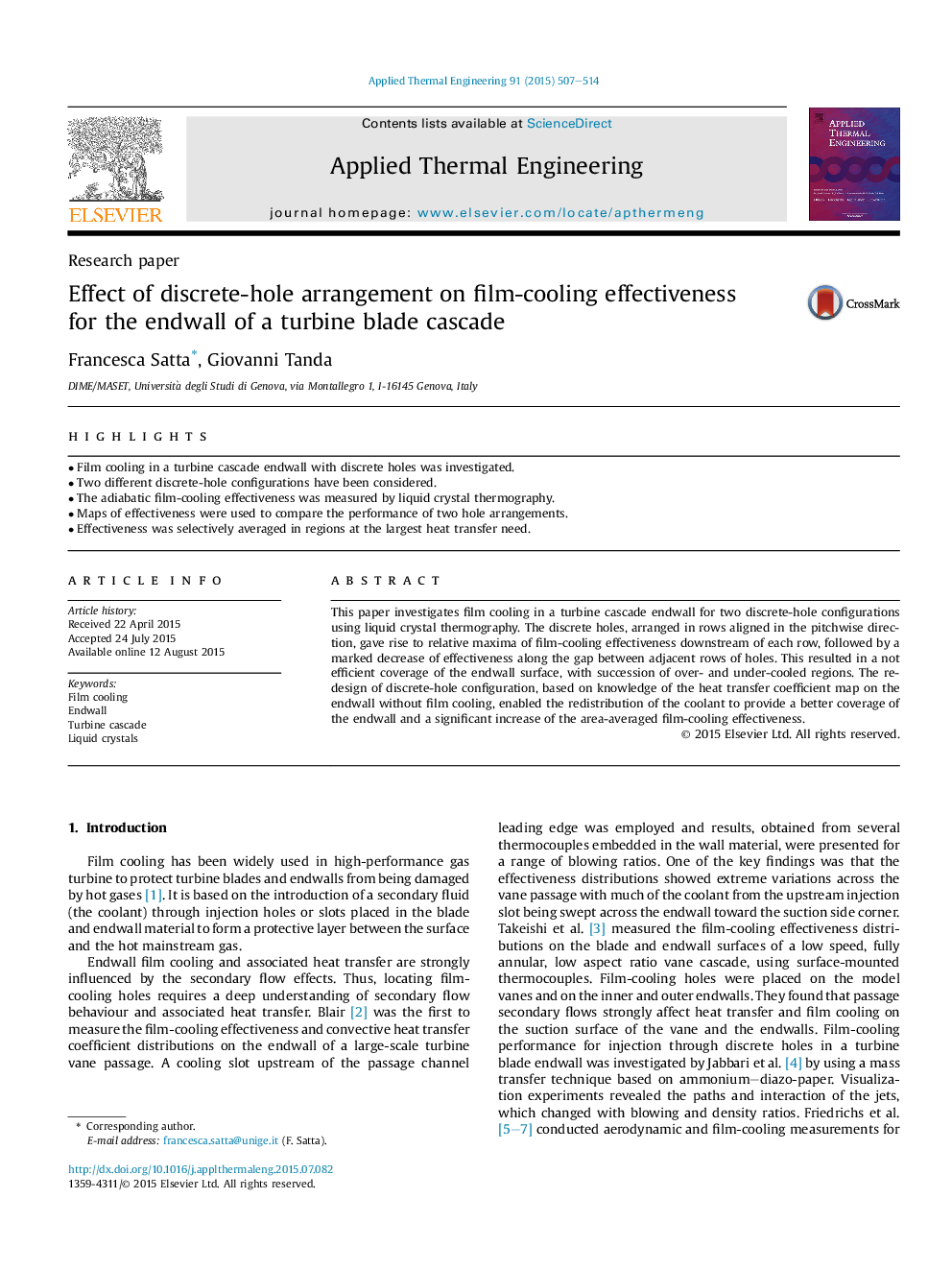| Article ID | Journal | Published Year | Pages | File Type |
|---|---|---|---|---|
| 645095 | Applied Thermal Engineering | 2015 | 8 Pages |
Abstract
This paper investigates film cooling in a turbine cascade endwall for two discrete-hole configurations using liquid crystal thermography. The discrete holes, arranged in rows aligned in the pitchwise direction, gave rise to relative maxima of film-cooling effectiveness downstream of each row, followed by a marked decrease of effectiveness along the gap between adjacent rows of holes. This resulted in a not efficient coverage of the endwall surface, with succession of over- and under-cooled regions. The re-design of discrete-hole configuration, based on knowledge of the heat transfer coefficient map on the endwall without film cooling, enabled the redistribution of the coolant to provide a better coverage of the endwall and a significant increase of the area-averaged film-cooling effectiveness.
Related Topics
Physical Sciences and Engineering
Chemical Engineering
Fluid Flow and Transfer Processes
Authors
Francesca Satta, Giovanni Tanda,
